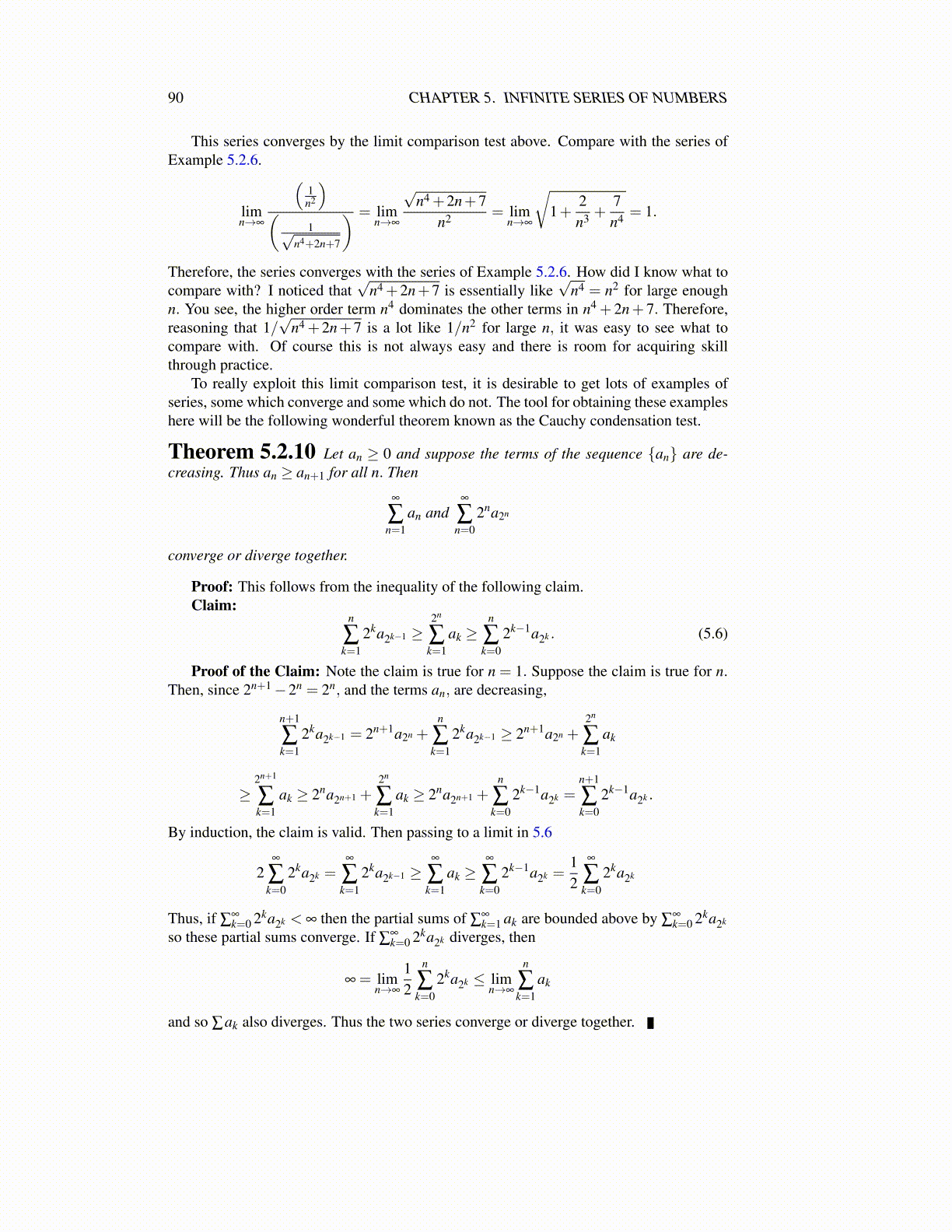
90 CHAPTER 5. INFINITE SERIES OF NUMBERS
5. Find a series which diverges using one test but converges using another if possible.If this is not possible, tell why.
6. If ∑∞n=1 an and ∑
∞n=1 bn both converge and an,bn are nonnegative, can you conclude
the sum, ∑∞n=1 anbn converges?
7. If ∑∞n=1 an converges and an ≥ 0 for all n and bn is bounded, can you conclude
∑∞n=1 anbn converges?
8. Determine the convergence of the series ∑∞n=1(∑
nk=1
1k
)−n/2.
9. Is it possible there could exist a decreasing sequence of positive numbers, {an} suchthat limn→∞ an = 0 but ∑
∞n=1
(1− an+1
an
)converges? (This seems to be a fairly diffi-
cult problem.)Hint: You might do something like this. Show
limx→1
1− x− ln(x)
=1− x
ln(1/x)= 1
Next use a limit comparison test with ∑∞n=1 ln
(an
an+1
)Go ahead and use what you
learned in calculus about ln and any other techniques for finding limits. These thingswill be discussed better later on, but you have seen them in calculus so this is a littlereview.
10. Suppose ∑an converges conditionally and each an is real. Show it is possible to addthe series in some order such that the result converges to 13. Then show it is possibleto add the series in another order so that the result converges to 7. Thus there is nogeneralization of the commutative law for conditionally convergent infinite series.Hint: To see how to proceed, consider Example 5.2.4.
5.4 More Tests for Convergence5.4.1 Convergence Because of CancellationSo far, the tests for convergence have been applied to non negative terms only. Sometimes,a series converges, not because the terms of the series get small fast enough, but because ofcancellation taking place between positive and negative terms. A discussion of this involvessome simple algebra.
Let {an} and {bn} be sequences and let An ≡ ∑nk=1 ak, A−1 ≡ A0 ≡ 0. Then if p < q
q
∑n=p
anbn =q
∑n=p
bn (An−An−1) =q
∑n=p
bnAn−q
∑n=p
bnAn−1
=q
∑n=p
bnAn−q−1
∑n=p−1
bn+1An = bqAq−bpAp−1 +q−1
∑n=p
An (bn−bn+1) (5.6)
This formula is called the partial summation formula of Dirichlet.
Theorem 5.4.1 (Dirichlet’s test) Suppose An ≡ ∑nk=1 ak is bounded and also that
limn→∞ bn = 0, with bn ≥ bn+1 for all n. Then ∑∞n=1 anbn converges.